Coast and Marine
The City of Port Adelaide Enfield enjoys a coastline spanning from Semaphore South through to Outer Harbour and the Port River. Much of this area is developed as passive recreation areas, including open lawned areas, barbecues, recreation paths, a shared bicycle/pedestrian path, boardwalks, landscaped areas and important areas of natural vegetation. The City of Port Adelaide Enfield plays a proactive and supporting role in managing impacts upon the coast including working with the State and coastal bodies for decision making, involvement in research programs, recreation, maintenance and safety.
Coastal Management Plans
in conjunction with the local community we have developed a Community Coastal Management Plan, which addresses the important issues of coastal and beach management in our City, including sand carting. Sand carting is the responsibility of the Coast Protection Board and consultation with Council is carried out when required.
"Coast Park" is a major government initiative to foster the development of a linear park along the entire metropolitan coastline from Sellicks Beach in the south to Outer Harbor in the north (some 70km of coastline). The Coast Park concept includes a shared-use recreational path, landscaping, interpretive signage, public art, seating and other enhancements that improve the attractiveness of the coastal environment.
The City of Port Adelaide Enfield constructed the Largs North section of Coast Park that includes a shared-use recreational path running through the sand dunes, which completed the north-south link of path between Outer Harbour and Semaphore Jetty in the early 2000’s, a total distance of nearly 8 kilometres.
Also associated with the Largs North section of path (distance of 1.8km) was the revegetation of the surrounding coastal area, the installation of interpretive signage, seating and enhanced beach/path access. The path was constructed from a sandy coloured bitumen and timber decking structure to ensure that significant vegetation was avoided and to allow reptile/snake access beneath the path. This coupled with the revegetation works has ensured that the path blends into the surrounding environment. Soon after the Largs North section path, Council Coast Park south of Semaphore Jetty to the Council boundary at Bower Road was developed in consultation with the wider community, allowing people to easily access and enjoy this coastal section all the way to the southern Council boundary.
Approximately 20,000 indigenous plants were originally planted in the Largs North and in subsequent years after the construction of the path. The vegetation has taken off significantly, particularly adjacent to the path where some plantings have been in place for 20 years. Recently, Semaphore Largs Dunes Group, Taperoo Dunes Group and Friends of North Haven Dunes together with the assistance from Council plant over 4000 indigenous plants per year and undertake significate weed control measures to help preserve the coastal dune habitat”.
The Natural Resources Management Program has now replaced the successful Coastcare program. This has provided the Coast Protection Board with an opportunity to build on Coastcare's past successes and provide funding to support a community based small grants program. The grants will be delivered through coastal councils to ensure that the existing partnership between Local Government and the State Government continues.
Acid sulfate soils may form under tidal conditions and can generally be expected in low-lying coastal areas.
Disturbance of these soils and exposure to air can mobilise sulfuric acid and cause toxic runoff that can degrade the marine environment and result in fish kills and algal blooms. Council, in partnership with a host of stakeholders and agencies, has undertaken a study of coastal acid sulfate soils in the Gillman area to identify the presence and nature of acid sulfate soils in order to develop strategies to address and manage their impacts. The Coast Protection Board has published the following information and policy guidelines about Coastal Acid Sulphate Soil Report via their 'Coastline 33' brochure.
Acid sulphate soils report(PDF, 1756.94 KB)
The marine waters and coastal wetlands of Barker Inlet and the Port River Estuary, on the eastern side of Gulf St Vincent, comprise one of the South Australia's largest and most ecologically productive estuaries. The area plays a critical role in maintaining costal and marine biological diversity, in maintaining the stability of Gulf St Vincent, and in maintaining economically important commercial and recreational fisheries. It is therefore of enormous ecological and economic significance to this State. Despite its importance, research clearly indicates that the health of the Barker Inlet and Port Estuary has declined sharply in the face of a wide range of human induced impacts.
Mutton Cove is located on the eastern coast of Outer Harbor on the Lefevre Peninsula. Since European settlement it has been significantly degraded. It is very important ecologically as the last remaining significant area of samphire and mangrove woodland on the Lefevre Peninsula. The land is identified by the Commonwealth's Environment Protection and Biodiversity Conservation Act 1999 as an important migratory bird habitat.
In 2005, the area was designated as a nature reserve, managed by the State Government. The purpose of the Mutton Cove Conservation Reserve is to enrich, restore and conserve the samphire and mangrove woodland and encourage ecologically sensitive uses of the area.
The mid and low salt marsh and mangrove vegetation is nursed around intertidal, supra-tidal and extra-tidal sea water fluctuations. The influence of sea level rise combined with extreme super tidal storm events over recent years have eroded the river levee bank and in May 2016 the levee breeched, exposing the wetland to more frequent tidal movement, increasing water levels and rapidly encouraging the colonisation of mangrove regeneration
